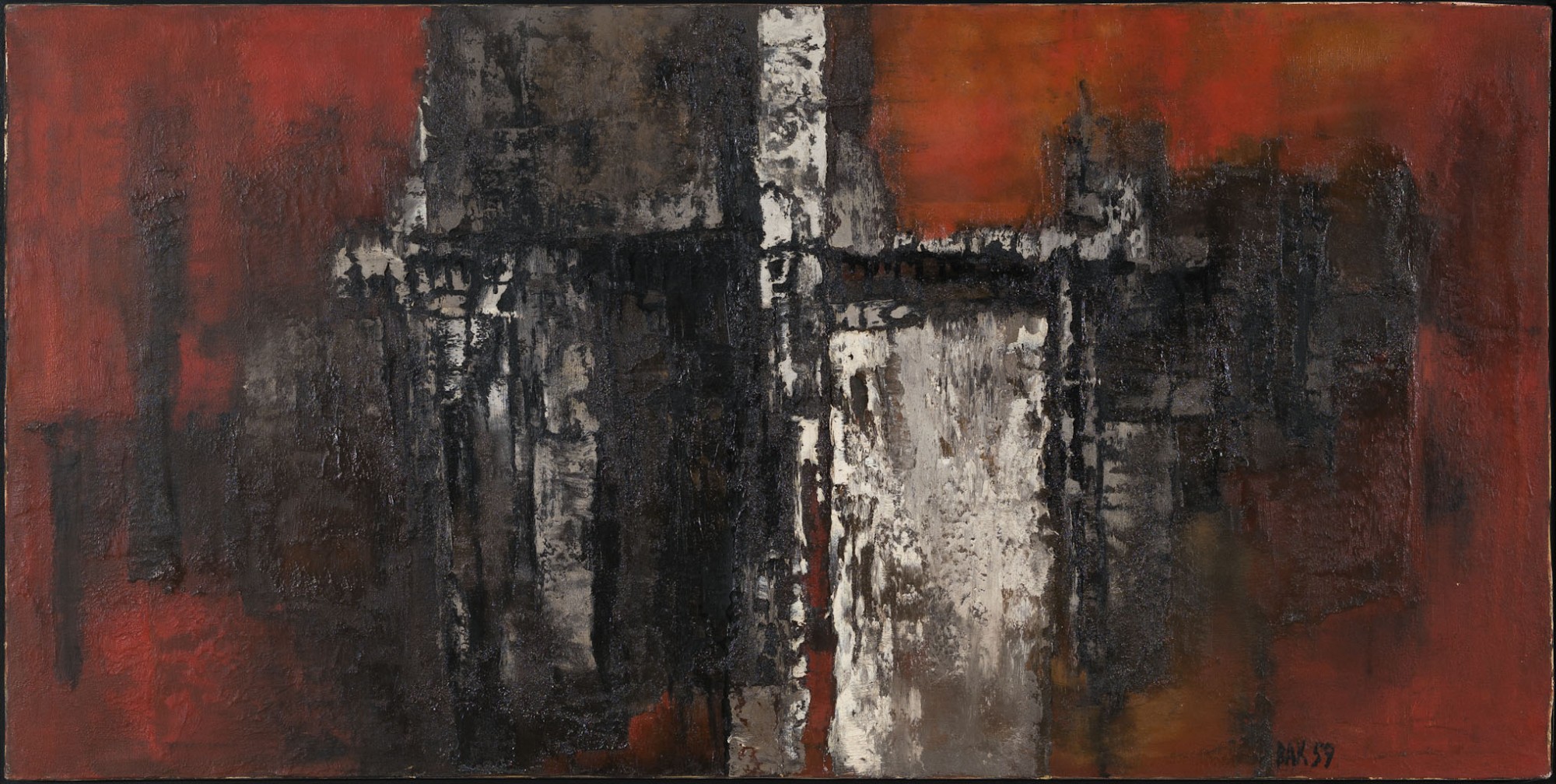Exhibit of the month |
← |
Published: 2020-01-14

SHELTER, 1959 (oil on canvas)
In the 1950s, Bak thought that the horror he had experienced in the Holocaust could be expressed by abstract means.
Following his graduation from École des Beaux Arts in Paris, Bak started painting intensely. In 1959, Bak went to Rome, where his first exhibition of abstract paintings enjoyed great success. In 1961, he presented his works at the International Carnegie Exhibition in Pittsburgh. In 1963, he had solo exhibitions in Jerusalem and Tel Aviv. Bak had now earned international recognition. In the 1950s, abstract expressionism (born in the 1940s in the community of New York artists) became one of the hottest art trends. At that time Bak thought that it is best to convey all the horror which he had experienced during the Holocaust by abstract means and arte povera style. He made collages: he glued wool soaked in water and black or white paper on canvas thus building texture, he used what could be found in nature – dirt and soil.
Shelter is a recollection of what Bak experienced when he was hiding from raids with his mother in the bomb shelter: something is burning, there is noise, bombs are falling, only stones, lime, dirt, and abyss remain. “I must confess to one thing: I painted in Rome in accordance with what was valid at the time. The abstract form helped to avoid details, which are too painful, and to maintain distance between me and them,” Bak said.
Samuel Bak was born in 1933 in Vilnius. At the age of nine, Bak staged his first exhibition at the Vilna Ghetto. By the end of WWII, Samuel and his mother were the only members of his extensive family to survive. They were living in the displaced persons camp in Landsberg, Germany. Subsequently, the artist lived in Israel, Italy, France, and Switzerland before finally settling in the United States of America, where he continues his creative path.
Prepared by Ieva Šadzevičienė, Head of VGSJM Tolerance Center and Samuel Bak Museum.
| ↑ | ← |
